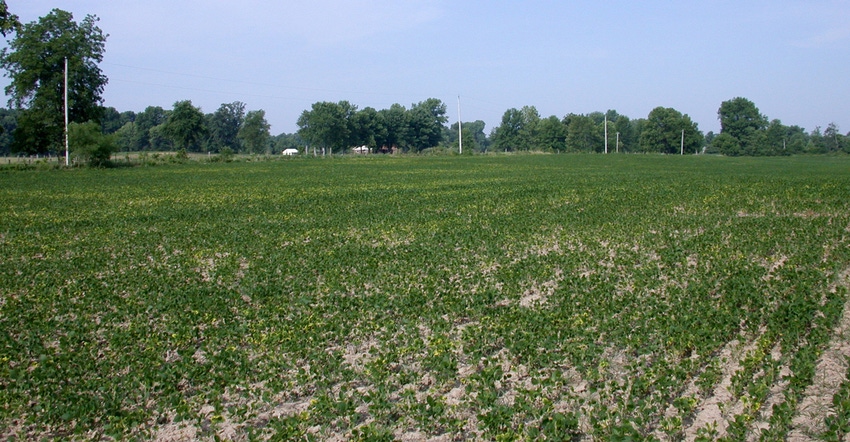
Figuring you could save on input costs was the deciding factor. You planted a few fields of soybeans after soybeans primarily to cut costs. Now you’re wondering if you will slip by without challenges. Or will pests and diseases become a bigger issue than you’re used to in rotation?
Three Indiana Certified Crop Advisers share their insights — and all three note there are no clear answers. The panel includes Jesse Grogan, agronomist, LG Seeds, Lafayette; Greg Kneubuhler, G&K Concepts, Harlan; and Tom Stein, manager of the Boswell and Templeton branches for Ceres Solutions.
Grogan: Second-year soybeans can be grown without problems, but are more vulnerable to disease and weed pressure. If you still have time, choose a different variety for the second-year fields. Look for a good health package, especially for sudden death syndrome, soybean cyst nematode, and foliar diseases such as frogeye leafspot and stem and pod blight. I hope you’re going back into fields that are moderately to well- drained.
Kneubuhler: Soybean cyst nematode is a hidden loss on many farms. Typically, lighter, lower exchange-capacity soils carry a higher risk of building populations of soybean cyst nematodes. Planting soybeans back to back raises the risk of SCN.
Certain diseases such as bacterial blight, stem canker, pod and stem blight, septoria, and frogeye leafspot overwinter in soybean residue. Beans following beans carries a higher risk of the impact of that carryover. Fields that are poorly drained or at higher risk of soil compaction will show up with these diseases more often. Often fungicide applications show a higher return on investment when applied in beans back to beans vs. in rotation soybeans.
If you still have time, go with beans with fungicide seed treatments. Beans back to beans poses an even higher risk, particularly with pythium, phytophthora and SDS.
Grogan: Consider using products such as Ilevo for SDS suppression. Weed control could be more of a challenge, so plant clean after a good burndown if you can. Use a residual program with products with multiple sites of action. Consider using fungicides if foliar diseases are identified.
Stein: The chances of getting by without any problems in second-year soybeans might be slim. Anytime you get out of a crop rotation, you increase your chances of having more insect problems. Diligent scouting throughout the season and treatment if economic thresholds are met will be imperative.
One pest that thrives in continuous soybeans is SCN. They reproduce and build populations the first year. Second-year beans could result in elevated populations, particularly if the soil pH is above 7.0. That could reduce plant health and result in yield loss.
Several diseases might be more prevalent in second-year soybeans if environmental conditions are right. They include white mold, brown stem rot, phytophthora, pythium and rhizoctonia.
The good news is that in many cases, yields of second-year soybeans are not significantly different than yields in first-year beans. It’s the third and fourth year where significant yield losses begin to occur.
About the Author(s)
You May Also Like




